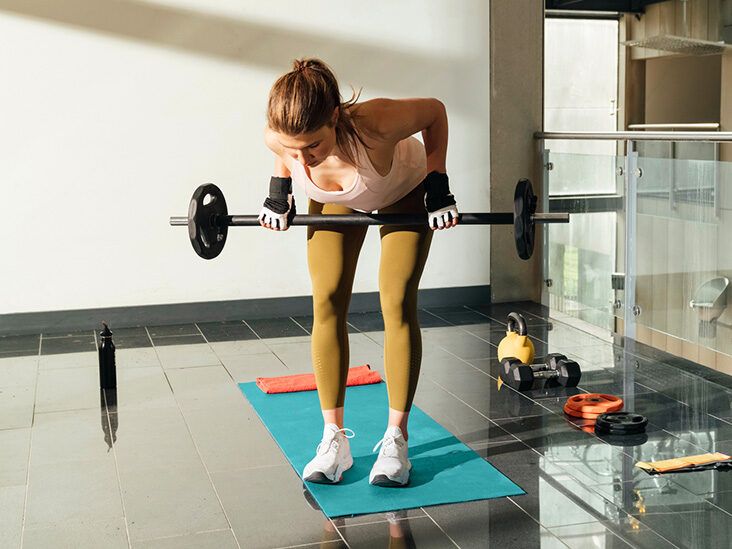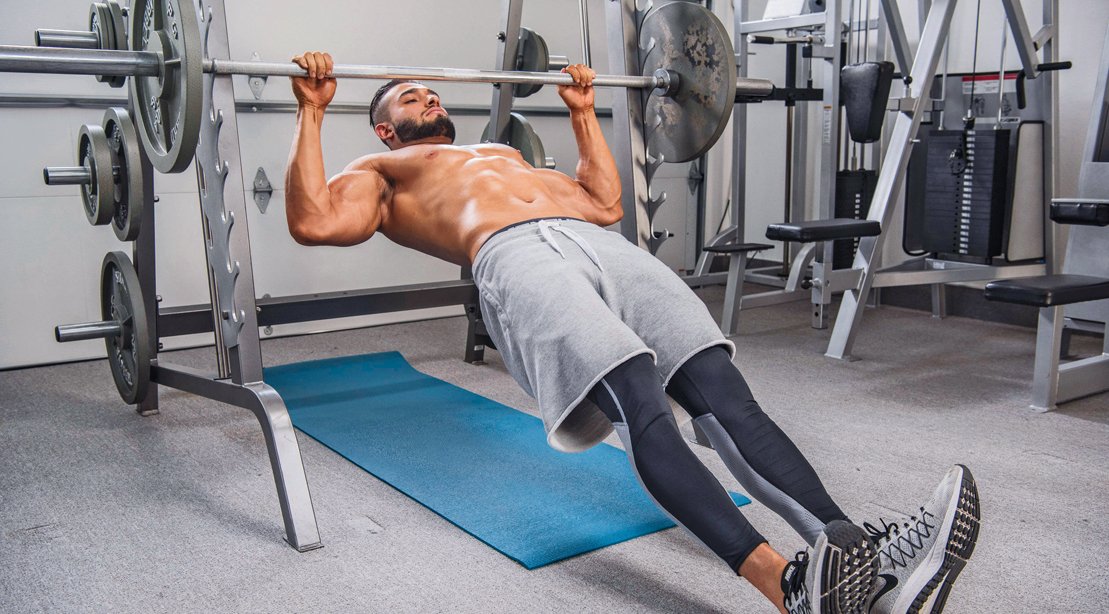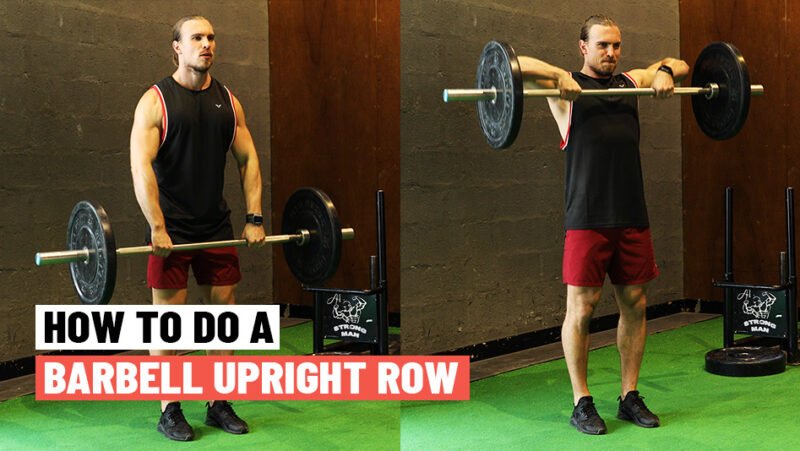The incline row is an upper-body strength exercise targeting the back muscles. It’s performed with a weight while leaning forward at an angle.
Incline rows are essential for those aiming to enhance their back strength and posture. This dynamic move specifically works the muscles in the upper and mid-back, such as the rhomboids and trapezius, while also engaging the biceps and shoulders. Incorporating incline rows into your fitness routine can lead to improved muscle tone and endurance, contributing to a more sculpted and balanced physique.
Whether you are an athlete looking to improve performance or simply seeking a functional exercise for a stronger back, the incline row delivers on all fronts. With the right technique, it offers a safe and effective way to build a sturdy foundation for a variety of physical activities.
Elevating Your Back Workout
Ready to take your back workout to new heights? Elevating your back workout isn’t just about adding more weight. It’s also about incorporating exercises that challenge your muscles in unique ways. Enter incline rows, a variation of the traditional row that puts a fresh angle on back training. With the bench set at an incline, you activate different muscle fibers and bring your upper back into the spotlight. Get ready to level up your strength with this game-changing move.
The Appeal Of Incline Rows
Why are so many fitness enthusiasts and trainers raving about incline rows? Their magic lies in the angle. Changing the incline shifts the focus of the exercise, emphasizing the upper back muscles and hitting them hard. Not only do incline rows add variety to your routine, but they also promote improved posture and greater muscle engagement. Spice up your sessions with this adaptable move for an all-around stronger back.
Primary Muscles Targeted
| Muscle Group | Benefits |
|---|---|
| Upper Back | Strengthens and defines |
| Rhomboids | Improves scapular retraction and posture |
| Trapezius | Builds upper body strength |
| Rear Deltoids | Enhances shoulder stability and aesthetics |
| Biceps | Provides arm support and pulling power |
- Focus on form and control to engage these muscles properly.
- Experiment with grip variations to emphasize different muscle groups.
- Use a weight that allows for full range of motion and proper technique.

Credit: www.healthline.com
Anatomy Of A Proper Incline Row
The Incline Row is a powerful exercise. It targets your upper body. It builds muscle. And it increases strength. To get these benefits, proper form is key. Let’s dive into the anatomy of a proper Incline Row.
Stance And Grip Basics
Start with your stance. It should be firm and balanced. Your feet should sit flat on the ground. Make sure they’re shoulder-width apart.
Next, your grip. Hold the bar with confidence. Your hands should be a bit wider than shoulder-width. This position creates a strong base. It also reduces injury risk.
The Rowing Motion Explained
Lean forward on the incline bench. Keep your chest on the pad. The rowing motion begins here.
- Hold the weights directly below your shoulders.
- Pull the weights towards your hips.
- Keep your elbows close to your body.
- Squeeze your shoulder blades together at the top.
Control is important. Lower the weights slowly. You should feel your muscles work. Do not let gravity do the job. Remember to breathe. Inhale as you lower. Exhale as you row.
Variations And Their Benefits
Exploring variations of the Incline Row can maximize muscle engagement and prevent workout boredom. Different angles and equipment offer unique benefits. Let’s delve into three popular variations:
Dumbbell Incline Row
- Targets the middle back, improves stability
- Enhances individual muscle focus, corrects imbalances
Set the bench at a 45-degree angle. Pull dumbbells towards your waist. Keep elbows close to your body.
Barbell Incline Row
- Engages more muscles at once, boosts compound movement benefits
- Supports heavier lifting, builds overall strength
Lie chest-down on the incline bench. Grasp a barbell with both hands. Row towards your torso.
T-bar Row Variation
- Fuses the grip of a barbell with the angle of an incline row
- Activates the back muscles differently, essential for rounded development
Stand over the T-bar. Bend forward and grip the handles. Pull the bar towards your chest.
| Exercise | Primary Muscle | Secondary Muscles | Equipment |
|---|---|---|---|
| Dumbbell Incline Row | Middle Back | Biceps, Shoulders | Dumbbells |
| Barbell Incline Row | Upper Back | Lower Back, Hamstrings | Barbell |
| T-bar Row Variation | Lats | Rear Delts, Traps | T-bar |
Avoiding Common Mistakes
The Incline Row is a powerful exercise to build a strong back. Yet, many gym enthusiasts make mistakes that limit their gains. Understanding and avoiding these missteps is key to maximizing the benefits of the Incline Row. Let’s explore common areas where attention to detail can make a significant difference.
Mind Your Posture
Proper form is critical for an effective Incline Row. Keep these pointers in mind:
- Stand firmly with feet shoulder-width apart.
- Keep your back straight throughout the exercise.
- Avoid rounding your shoulders; imagine squeezing a pencil between your shoulder blades.
Breathing Technique
Never underestimate the power of breathing:
- Breathe out when you pull the weight towards you.
- Breathe in when you return to the starting position.
Overloading Pitfalls
Avoid the temptation to lift too much, too soon:
| Do | Don’t |
|---|---|
| Start with a weight you can manage for 10-12 reps. | Rush into heavy weights causing poor form and injury. |
| Gradually increase the load. | Ignore discomfort and push through pain. |
Remember, the key to progress is consistent, mindful practice. Focus on these areas to enhance your Incline Row technique and enjoy the strength benefits.
Incorporating Incline Rows Into Your Routine
Welcome to the segment on Incorporating Incline Rows into Your Routine. This powerhouse move can transform your back workout. Include incline rows to develop strength and improve posture. Let’s dive into creating a well-rounded routine with incline rows.
Creating A Balanced Back Workout
A strong back needs balance. Engage various muscles with diverse exercises. Include pull-ups, deadlifts, and face pulls. Remember these points for balance:
- Mix grip positions: Use overhand, underhand, and neutral grips.
- Vary angles: Combine vertical pulls with horizontal rowing movements.
- Prevent imbalance: Work both sides equally to avoid asymmetries.
Repetition And Weight Strategy
Right reps and weights make a difference. Follow these tips for incline rows:
| Goal | Reps | Weight |
|---|---|---|
| Endurance | 12-15 | Light |
| Hypertrophy | 8-12 | Moderate |
| Strength | 4-6 | Heavy |
Start with three sets. Increase weight gradually. Maintain form for safe, effective workouts.

Credit: www.menshealth.com
Maximizing Gains With Nutrition And Recovery
People who perform the Incline Row want to see strong results. They work hard in the gym to build muscle. Yet, many forget that what happens outside the gym is just as crucial. Proper nutrition and rest boost those muscle gains. Let’s dive into how you can get the most from your Incline Row efforts with the right food and recovery strategies.
Fueling Muscle Growth
Eating right is key to muscle building. After an Incline Row session, your muscles are like sponges. They need nutrients to repair and grow. Here are food tips to maximize muscle gains:
- Protein is a must. Aim for lean sources like chicken, fish, or plant-based options.
- Complex carbs give lasting energy. Think sweet potatoes and brown rice.
- Healthy fats aren’t the enemy. Include nuts and avocados in your diet.
Remember, timing matters too. Eat a balanced meal within an hour after your workout. This helps in quick muscle recovery.
Importance Of Rest And Recovery
Sleep fuels recovery. Muscles repair themselves during rest. Aim for 7-9 hours of quality sleep each night. Here’s what good rest does for you:
| Rest Benefit | Impact on Incline Row |
|---|---|
| Reduces muscle fatigue | Improves performance in next session |
| Boosts growth hormone release | Enhances muscle growth |
| Allows mental refresh | Keeps focus sharp for proper form |
Active recovery is also beneficial. Include light activities on rest days. Take a walk or try yoga. These aid in reducing muscle soreness and preparing you for your next Incline Row workout.

Credit: athleanx.com
Frequently Asked Questions For Incline Row
What Muscles Do Incline Rows Work?
Incline rows primarily target the upper back muscles, including the trapezius, rhomboids, and lats. They also engage the biceps and rear deltoids.
What Is The Best Angle For Incline Row?
The optimal angle for an incline row is typically between 30 to 45 degrees. This range effectively targets the upper back muscles and minimizes stress on the lower back.
What Does Incline Seated Row Work?
The incline seated row primarily targets the upper back muscles, including the rhomboids and lats, and secondarily works the biceps and shoulders.
How To Do Incline Row Properly?
Set a bar at waist height on a Smith machine or rack. Stand facing the bar, gripping it wider than shoulder-width. Lean back, keeping your body straight, then pull your chest towards the bar. Slowly return to starting position and repeat for desired reps.
Conclusion
Perfecting the incline row can significantly elevate your upper body strength routine. With its targeted approach, it sculpts your back, shoulders, and arms. Remember, technique trumps weight to maximize gains and minimize injury. So, grab those weights, set your bench, and let’s build that strong, toned back you’re after.
Embrace the incline row for a game-changing workout.


